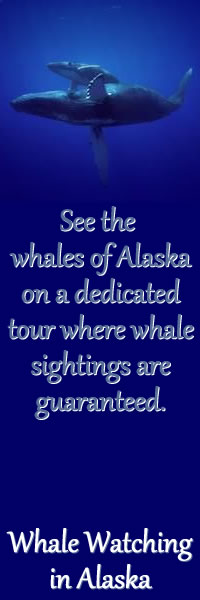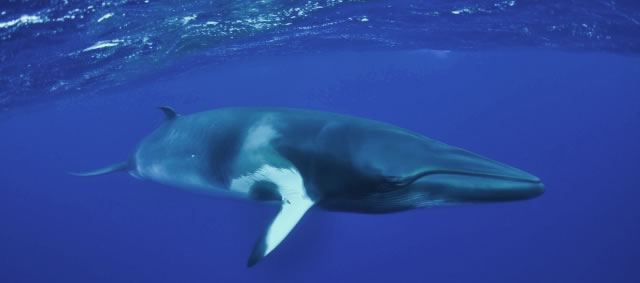 |
Alaska whale watching tours allow the visitors an opportunity to observe and photograph Humpback, Orca, Gray, and Beluga whales, along with many other marine mammals, in their natural environment. |
 |
|
Captains Choice Whale-Watching-Alaska.com |
 |
 |
|
 |
|
Alaska Minke WhalesAnother name for the minke whale is the Little Piked Whale. It is a fast swimmer, swimming at 16-21 mph, spending very little time on the surface. They are curious and have been known to keep up with and even approach ships. This whale can be tricky for whale watcher to spot, as they are small and easily hidden in a choppy sea. Their blow is rarely visible and disappears quickly after exhaling. When Is The Best Time To See Minke Whales in Alaska?Minke whales spend spring and summer months in Alaska’s Kachemak Bay, Glacier Bay and Prince William Sound. They are distributed through out the pacific from Baja California in the winter months north to the Bering Sea and Chukchi seas in the summer. They prefer the icy waters in the northern oceans, more so than other baleen whales. They are found right up to the edge of the icepack in Polar Regions, sometimes becoming trapped in the ice fields.
General InfoThe minke whale's skin is very dark gray above and lighter below. The coloration
sometimes appears with pale stripes behind the flippers on the top and with a characteristic white band on
each flipper. Minke whales
are stocky, having a layer of blubber several inches thick. They have 50-70 throat grooves, running from
the chin to the mid-section. The minke whale has two long flippers (up to 1/8 of the body size), a small dorsal
fin, and a series of small ridges along the back near the flukes (tail). As the larger whales have become depleted and protected the whalers have begun take the minke whale as a replacement. Scientists continue to examine the minke populations in the areas they are harvested. They note that the populations have actually increased as they have started eating food previously eaten by the depleted larger whale species. Current populations are about 100,000 minke whales in the North Pacific. Where To See Minke Whales in Alaska?Throughout the coastal regions of the state there are though the most common places to see these whales is in the Bering Sea region north of the Aleutian chain. At times the minke whales are seen in Glacier Bay, and in the Gulf of Alaska by cruise ship passengers passing through during the spring and summer months. The Minke WhaleCommon names: Minke Whales Fin Whales in Alaska can be spotted all along the Alaska coastlines including the Aleutians, Inside Passage and Prince William Sound. Whale Watching Alaska | Whale Watching | Whales in Alaska | Whale Watching Tours | Killer Whales Here on Whale Watching Alaska you will find information on Alaska whale populations, distributions and over all health. Promotes environmentally responsible whale watching trips featuring gray whale, killer whale, humpback whale, beluga and whale pod photo. Numbers obtained from the Alaska Dept. of Fish and Game and Noah.
|

